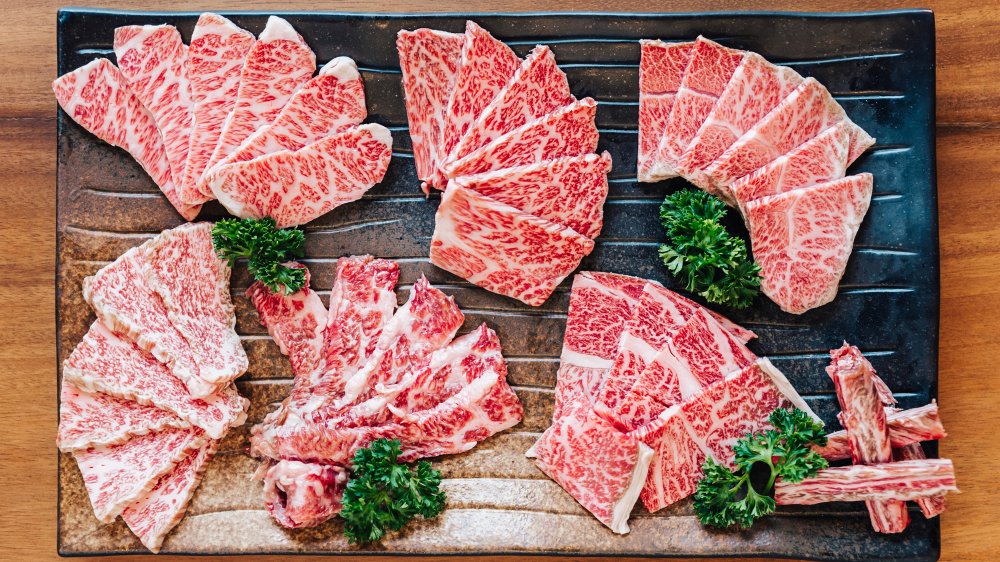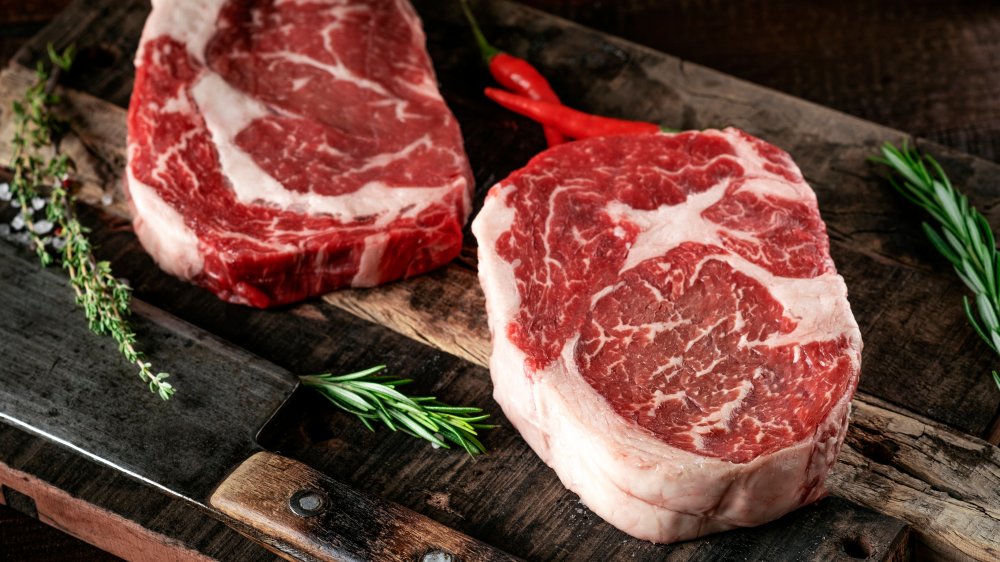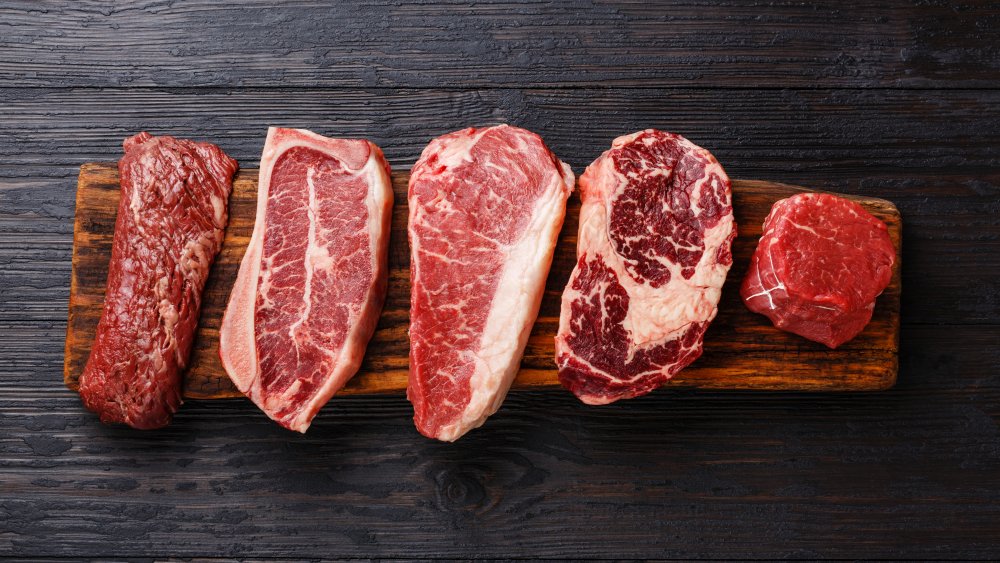This Is Why Marbling Is So Important For High-Quality Meat
Nothing beats a juicy cut of steak from your favorite restaurant or one you've made at home. Oftentimes chefs tout how important it is to find a cut that has a good level of marbling, and they aren't wrong. Whether you are going for a cut of Wagyu, a filet mignon, or a T-Bone steak, the marbling that the cut carries goes a long way to making the bite you are taking that much more memorable.
But what exactly is marbling? Marbling lines are the small white lines of intramuscular fat found within red meat, according to Masterclass. The philosophy is that the higher the amount of marbling within a cut, it will be juicier, more tender, and pack on even more flavor. That being said, the fat/marbling you find within the meat is not the same as the kind you find surrounding the meat. Masterclass explains that this intermuscular fat is the kind that you trim off your cut and don't eat.
What it means to have good marbling on your meat
The experts say high-quality meat holds more flavor in it due to the amount of marbling it possesses. A Crowd Cow report states that marbling influences how juicy the steak you're eating is going to be. So, how come meat is juicer when it has a fair amount of marbling in it? According to Crowd Cow, marbling helps the meat keep its moisture while it is being cooked, if you render (or cook out) all the internal fat (aka marbling) from the meat, you will be left with a piece of meat that is not only dry, but lacks in flavor.
Meat Chris explains how the USDA uses several levels of grading (yes, meat gets graded) to determine the quality of the meat. The USDA has eight grades that a cut of meat can earn: Prime, Choice, Select, Standard, Commercial, Utility, Cutter, and Canner (Prime being the best, and Canner being the worst). When assigning a grade to the meat, the USDA looks at the level of marbling, and the maturity of the meat, as well as other factors.
What kind of marbling you should look for
Meat Chris explains that there are three types of marbling that can appear on meat: fine, medium, and coarse. Fine marbling, like the type you see on Kobe and Wagyu cuts, are seen as the highest quality of marbling that can be found on meat. What does that mean? That the cow was treated correctly and was fed with the highest of ingredients (#happycows). According to Eat This, Not That!, this is why Wagyu beef is a more expensive cut of meat, as it was specifically bred and raised in a manner that would amplify the amount of marbling within the meat.
Now, when it comes to medium and coarse marbling lines, it all comes down to preference. Some say that the finer the lines, the juicer the meat, others claim that it doesn't matter (via Kansas State University). Meat Chris shares that there is a Beef Marbling Score that each cut receives, BMS #1 Quality Grade 1 being the worst and BMS #12 Quality Grade 5 being the best (think of the marbling in Wagyu).


